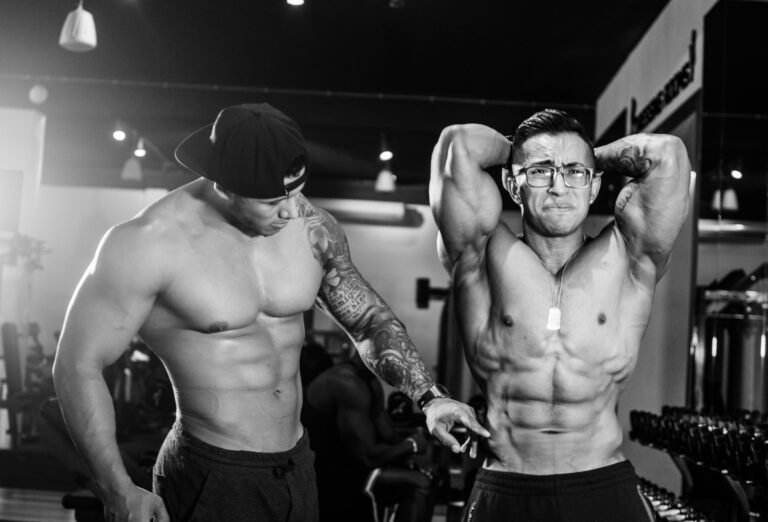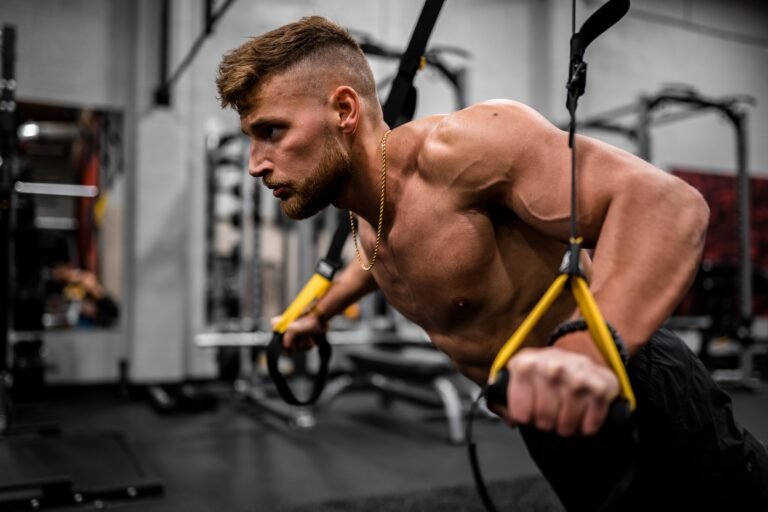BodyBuilding: The Basics

By GetFitFocus

BodyBuilding: What It Is and What It Is Not
Bodybuilding is described as the process of developing your muscles by using a combination of weight training, specific caloric intake, and getting proper rest. The sport goes well beyond just building muscles simply to be fit. It requires more intense workouts. Some people get into “professional bodybuilding” so they can compete against others and show off their physiques to a panel of judges.
People involved in competitive bodybuilding work extremely hard to develop and maintain an aesthetically pleasing (by bodybuilding standards) body and balanced physique. The bodybuilding competitors will then participate in contests and events to show off their bodies. The events also require them to perfor a series of poses. Those involved in competitive bodybuilding will spend time practicing their poses. This will allow them to show all of their muscle groups in great detail. How well a bodybuilder can display their physique will have a big effect on how they are judged.
A bodybuilder’s size and shape are more important than how much he or she can lift when it comes to competitive bodybuilding. The sport of competitive bodybuilding should not be confused with power-lifting. Power-lifting is where they are judged on actual physical strength. Olympic weightlifting is where the main objective is equally split between strength and technique. Though these sports may seem superficially similar to the casual observer, each one entails a different regimen of training, diet and performance.

BodyBuilding: Nutrition Basics
While exercise is certainly a key component in bodybuilding, so is nutrition. The bodybuilder will never reach their full potential if the body doesn’t get the proper nutrients to help the muscles grow. Since bodybuilders require high levels of muscle growth and repair, they require a specialized diet.
Generally this diet is centered around the macronutrient protein, and its smaller component – amino acids. Protein is the main component of muscle. It also has some control over our hormones and how cells communicate with each other. Most enzymes are proteins and are responsible for many chemical reactions in our body. Lastly, protein is essential when it comes to transporting oxygen to the cells throughout our body.
A bodybuilder needs more calories than the average person of the same height and weight. It takes a higher number of calories above their “maintenance level” in order to continue to increase mass and gain muscle. A maintenance level of food energy combined with cardiovascular exercise is required to lose body fat. It is the very low body fat percentages of bodybuilders that allow all of their muscles to show with vivid definition.
BodyBuilding: Training Basics
When you first begin this type of exercise program or any fitness workout, your muscles immediately begin to use energy which is what allows them to work. For optimum health and fat burning your bodybuilding workouts should consist of both anaerobic, and aerobic training.
Many weight training programs will tell you to do 12 repetitions of each strength training exercise to gain muscle. The problem with this approach is that it leaves the muscles without enough tension for effective muscle gain. High-tension, such as heavy weights, allows the muscles to grow much larger than they would without high-tension. This is what leads to a maximum gain in strength.
Having longer tension time boosts the muscle size by generating the structures around the muscle fibers, which improves endurance. The standard prescription of 8 – 12 repetitions provides a balance. However, only using this range of reps when you strength train does not generate the greater tension levels provided by the heavier weights and doing less reps. To get maximum tension and resistance, lower the reps and increase the weight. By changing the number of reps and adjusting the weight you can stimulate all types of muscle growth.
There are also those who perform the 3-Set rule, and while there’s nothing wrong with this there is nothing amazing about it either. The number of sets you perform should be based on your goals, and not on some half-century old rule. The more repetitions you do of an exercise, then the fewer sets you should do and vice-versa. Using this technique will keep the total number of repetitions performed of an exercise equal, with the only difference being time under tension.
This is why weight training should be based on your goals. If you are looking to add serious muscle then you have to move heavier amounts of weights, which will be done best using fewer reps and more sets. If your goal is to tone more, then using slightly lighter weights with more reps and fewer sets is the way to go.

Conclusion
A majority of bodybuilders do not compete competitively or perform in shows or events. However, if you desire to have the look of a bodybuilder then you will definitely have to train like a pro. This is one discipline where you can’t fake it, because the proof is in the results. You have to study and train like a pro as well as have the diet of a bodybuilding pro. Bodybuilding is clearly at the apex of fitness training, but with some hard work, clear goals and dedication you can achieve this fitness dream!

